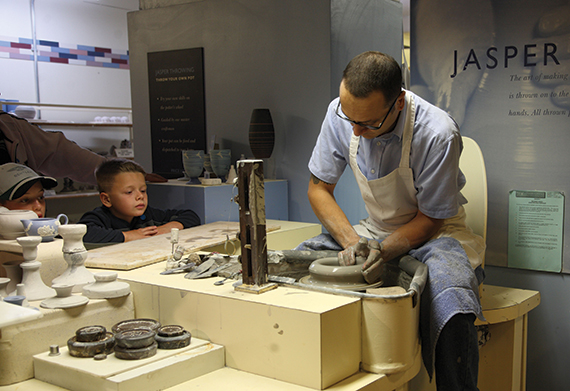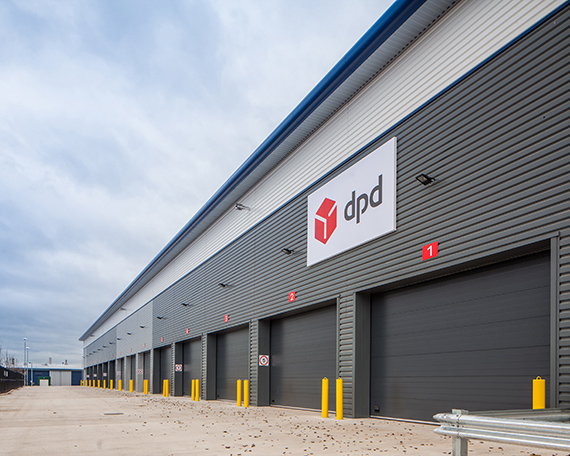 It’s all about perception. Long perceived as being an area in the doldrums, Stoke-on-Trent is now utilising its long, rich industrial heritage and status as the home of The Potteries to its advantage.
It’s all about perception. Long perceived as being an area in the doldrums, Stoke-on-Trent is now utilising its long, rich industrial heritage and status as the home of The Potteries to its advantage.
With the city spawning such globally recognised names as Royal Doulton, Portmeirion and Wedgwood, along with popular modern ceramic manufacturers such as Emma Bridgewater (she of spotty mug fame), the area still employs a quarter of all UK ceramics workers. So it is no wonder it is now capitalising on this unique selling point by hosting the country’s first and only ceramics enterprise zone, comprising six largely undeveloped brownfield sites the size of 250 football pitches.
The plan for a high-tech ceramic hub is the hook to bring an additional 9,000 jobs and new industry to the area between now and 2025. The Ceramic Valley EZ represents 4m sq ft of floor space and, at 346 acres, is one of the government’s larger zones, comprising six sites (see box), which run along the A500 corridor and consist of about 90% empty brownfield and greenfield land.
The Stoke-on-Trent and Staffordshire Local Enterprise Partnership gained EZ status for the sites in November 2015, after an unsuccessful attempt back in 2011. The developers involved and Stoke-on-Trent City Council say it is still early days for the zone, with its formal launch event only last month, but gaining the status and the perks it brings has created a buzz. Jonathan Phipps, strategic manager for economic growth at the council, says there have been 40 expressions of interest and six formal planning applications, two of which have already been built. “We’re getting to the point where we’ll be able to satisfy demand,” he says. “Before, we didn’t have enough shovel-ready sites but now we have enterprise zone status we can start bringing sites forward.”
The two applications completed are a 60,000 sq ft depot for courier firm DPD and a Greene King pub, both at Etruria Valley, the most developed of the sites. In addition, the West Midlands Ambulance Service is constructing a service centre opposite the DPD depot (see box).
Tile Mountain, a local ceramics distributor, is building a 109,000 sq ft, £10m warehouse with developer CWC Group on the former Johnson Tiles works in Highgate. It claims to be the largest tile distribution centre in the UK. CWC has also submitted plans for a speculative 120,000 sq ft unit for manufacturing and distribution, which is under consideration by the council.
Meanwhile, the Tunstall Arrow site has seen one deal, between developer Northern Trust and Q-railing, for a 40,000 sq ft warehouse and production facility. The UK HQ of the German-owned railings and balustrades manufacturer is in The Potteries and the company is expanding its operation. The planning application is expected to be approved by the end of the year, with work beginning in early 2017. Once completed, Q-railing will take a 15-year lease. Northern Trust is also tagged on an application for five units of between 10,000 and 30,000 sq ft.
Many of the sites in the zone have been derelict and awaiting development for several years. Chatterley Valley West, for example, has had planning consent since 2007. But the costs of land reclamation on these former heavy manufacturing sites, including steel works, has stalled development. “There is a history in terms of heavy industry and the land reclamation issues to go through. That’s probably one of the biggest challenges,” says Ian Cotterill, associate director at local agent Louis Taylor. He says that the land values achieved there, as opposed to Birmingham and even Stafford, counterbalance the challenges.
The council’s Phipps concurs and says that on paper the commercial costs of bringing the sites forward have not stacked up in the past. “We can take a view on whether we put gap funding into these. That’s one of the incentives of enterprise zone status,” he says. The council has a pot of £4.5m and is currently inviting developers to put forward proposals. The authority is allowed to keep full business rates on the zone, so Phipps says the pot will grow once the site attracts new occupiers.
Back in Chatterley Valley West, developer Harworth Estates, a former property arm of UK Coal, is a likely candidate for gap funding. A spokesman says it has spent the past few months looking at the mitigation works needed because of the gradient on the land and the costs that will incur.
The short-term aim of the zone is to meet pent-up demand by bringing all the sites forward, says Phipps. In the longer term, it will look at encouraging local companies in older, poorer-quality stock to relocate to the zone and work on creating its technical ceramics cluster.
With £25,000 secured from the government for an initial pilot to market the zone in Europe, China and the US, Phipps confirms the EZ is also included in both the Midlands Engine Pitchbook (a government-sponsored trade delegation of 11 Midlands’ LEPs) and the Northern Gateway Development Zone. The NGDZ is a partnership between two LEPs and seven councils designed to push the investment opportunities coming out of HS2 in North Staffs, Cheshire and Crewe.
Louis Taylor’s Cotterill says the impact of EZ status has already been positive. “This is a more focused approach. The zone’s situation, sat between Birmingham and Manchester and decent road and rail links, has already proved to be successful, judging by the interest.”
Etruria Valley
 The most developed of the sites, Etruria Valley, is already home to occupiers Vodafone, DPD and a Greene King pub, while the West Midlands Ambulance Service is building an 18,000 sq ft multi-purpose service centre for its ambulances. Online gaming provider BET365, a major employer in Stoke, moved its HQ to the valley this year but sits just outside the official zone.
The most developed of the sites, Etruria Valley, is already home to occupiers Vodafone, DPD and a Greene King pub, while the West Midlands Ambulance Service is building an 18,000 sq ft multi-purpose service centre for its ambulances. Online gaming provider BET365, a major employer in Stoke, moved its HQ to the valley this year but sits just outside the official zone.
Etruria Valley is owned by developer St Modwen and forms part of its 300-acre Festival Park site, which it has been developing since 1987. Etruria is the fourth phase of this development and has 48 acres remaining over five plots with capacity for 800,000 sq ft of commercial space.
St Modwen acquired the site from steel manufacturer Corus in 2002 and completed restoration in 2008. Regional director Mike Herbert says the timing “wasn’t perfect” and the recession hit progress. But unlike the rest of the zone, Etruria has 100% capital allowances on plant and machinery until 2020, which Herbert says is a big benefit. There is currently a serious inquiry from a major manufacturer, based on the capital allowances and size of the available land. “The enterprise zone gives us another reason to talk to people,” says Herbert. “We’ve seen a great deal of job creation in the 28 years we’ve been here and the zone is a great way of giving the site impetus.”











